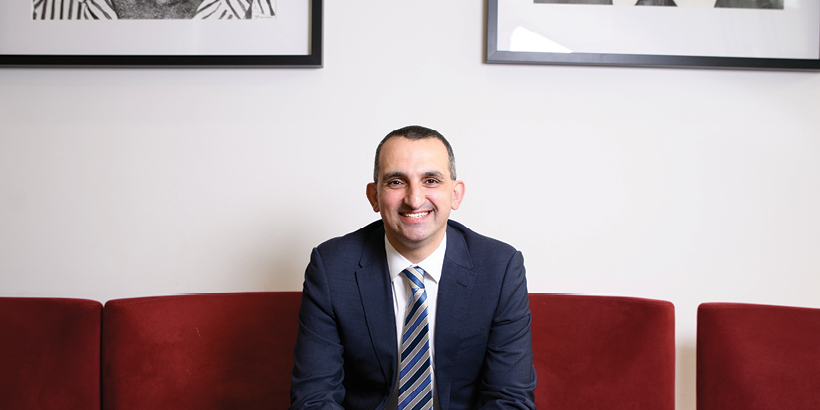
A brave new world
September 3, 2018
Australia’s Star Chamber
September 3, 2018FEATURE
At the core of AMA (NSW)’s advocacy around billing is protecting doctors’ rights to set their own fees.
Doctors’ fees have been in the spotlight for much of 2018 for multiple reasons. AMA (NSW) has had to weigh in on these issues on many occasions and, at times, the policies and protections we advocate for seem at odds.
In February of this year, Bupa announced changes that would have dramatically restricted doctors’ access to Bupa’s Medical Gap Scheme. Whilst it has always been a doctor’s right to set her or his own fee, many doctors choose to utilise gap scheme billing in certain circumstances. This is particularly the case for emergency presentations to hospital, whether that be in a public or private setting. It is also acknowledged that some doctors choose to charge a gap in these circumstances and for many situations, that is appropriate. Bupa’s proposed changes would have limited a doctor’s choice of billing option dependent not on the service, but rather on geographical location.
AMA (NSW) was one of the first organisations to recognise the significance of this issue and act upon it. Along with Federal AMA, we advocated to ensure that a doctor’s right to set her or his own fee is protected. Whilst Bupa has significantly backed down on many of their proposed changes, lack of Medical Gap Scheme access for practitioners working in non-BUPA contracted private facilities remains an issue. This is an area we will continue to work on.
Seemingly at conflict with protecting this access to Medical Gap Schemes, is the requirement for the AMA to provide a balanced argument of why doctors do, in fact, charge gaps in certain circumstances.
The airing of the ABC’s Four Corners – “Mind the Gap” on 28 May, focussed on the issue of patient out-of-pocket (OOP) costs related to specialist doctor billing and private sector health care. The program presented multiple case scenarios that ranged from very large OOP costs related to single surgeon bills, right through to “bill shock” from cumulative, multiple, small to medium OOP costs, associated with long and protracted multidisciplinary management.
The AMA does not support exorbitant charges – fees that the majority of a practitioner’s peers would consider to be unacceptable. Statistics reveal that this happens in very few instances. More than 90% of AMA members charge well below the list of fees at the insurers’ schedule, using no-gap schemes to minimise costs to patients.
But the AMA does respect a doctor’s choice to charge a fee.
On the surface, protecting Medical Gap Schemes and defending doctors’ rights to charge a gap seem at odds with each other, but the core issues driving AMA involvement are at the heart of each. The AMA 2017 Position Statement on Setting Medical Fees and Billing Practices states:
As highly trained professionals, medical practitioners are free to place their own value on their professional skills and expertise and determine what they consider to be a fair and reasonable fee for the services they provide.
Doctors should also satisfy themselves in each case as to a fair and reasonable fee having regard to their own costs and the particular circumstances of the case and the patient.
Indexation of the MBS and the private schedules have not kept pace with the costs of providing medical care. This is why patients may have out-of-pocket costs for medical services. The AMA List is indexed annually at a rate that takes into account the cost of providing medical services and is therefore higher than the MBS and private schedules. The AMA List guides members in setting their fees with periodic indexation.
The AMA opposes the introduction of any legislation that restricts the fees that medical practitioners may charge.
AMA Informed Financial Consent
The AMA encourages good informed financial consent (IFC) practice and the provision of information about medical fees to patients. Doctors are encouraged to review the AMA’s Position Statement on Informed Financial Consent (2015).
The AMA recognises that providing quality healthcare has a cost. As a practising surgeon in the private and public sectors, I am constantly reminded of the expertise, training and substantial risk that is required to provide this level of care. For those who are non-proceduralists, the issues are no less important. The decisions we make every day also carry risk. However, our years of training and experience allow us to make these decisions with confidence, knowing we are doing the best thing for our patients. The responsibilities are significant, and we should be remunerated for this. I believe this is not just the case for hospital specialists, but also for general practice and other outpatient-based services as well. This is obviously difficult to communicate to the wider community as it often seems to be a self-serving cause.
Our aim is to protect the quality of the healthcare we provide by not undervaluing it, but at the same time, we also recognise that practitioners may choose to provide this care without a gap if they so wish. Ultimately, we see it as our role to protect this choice of the doctor and we will always continue to do so.

